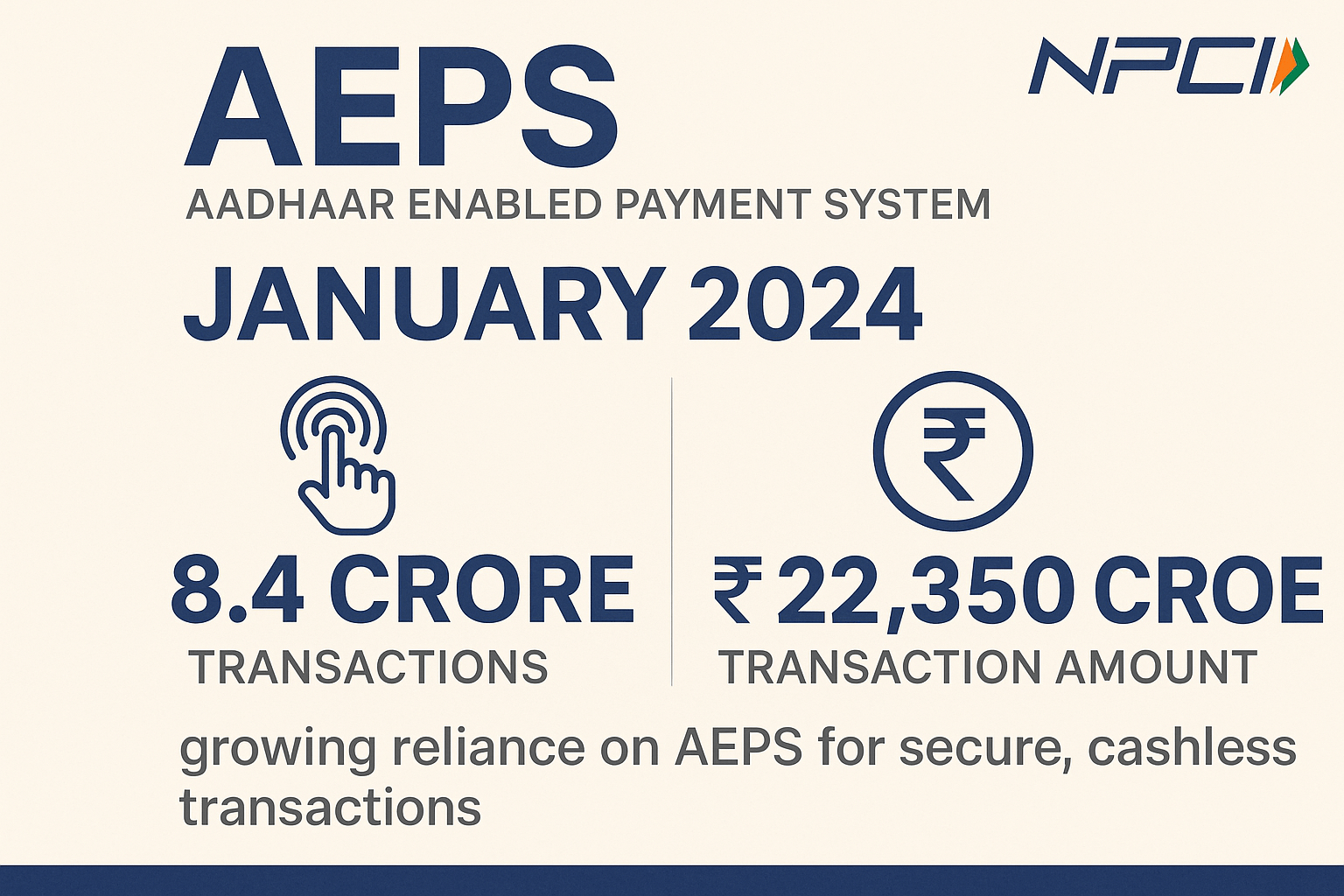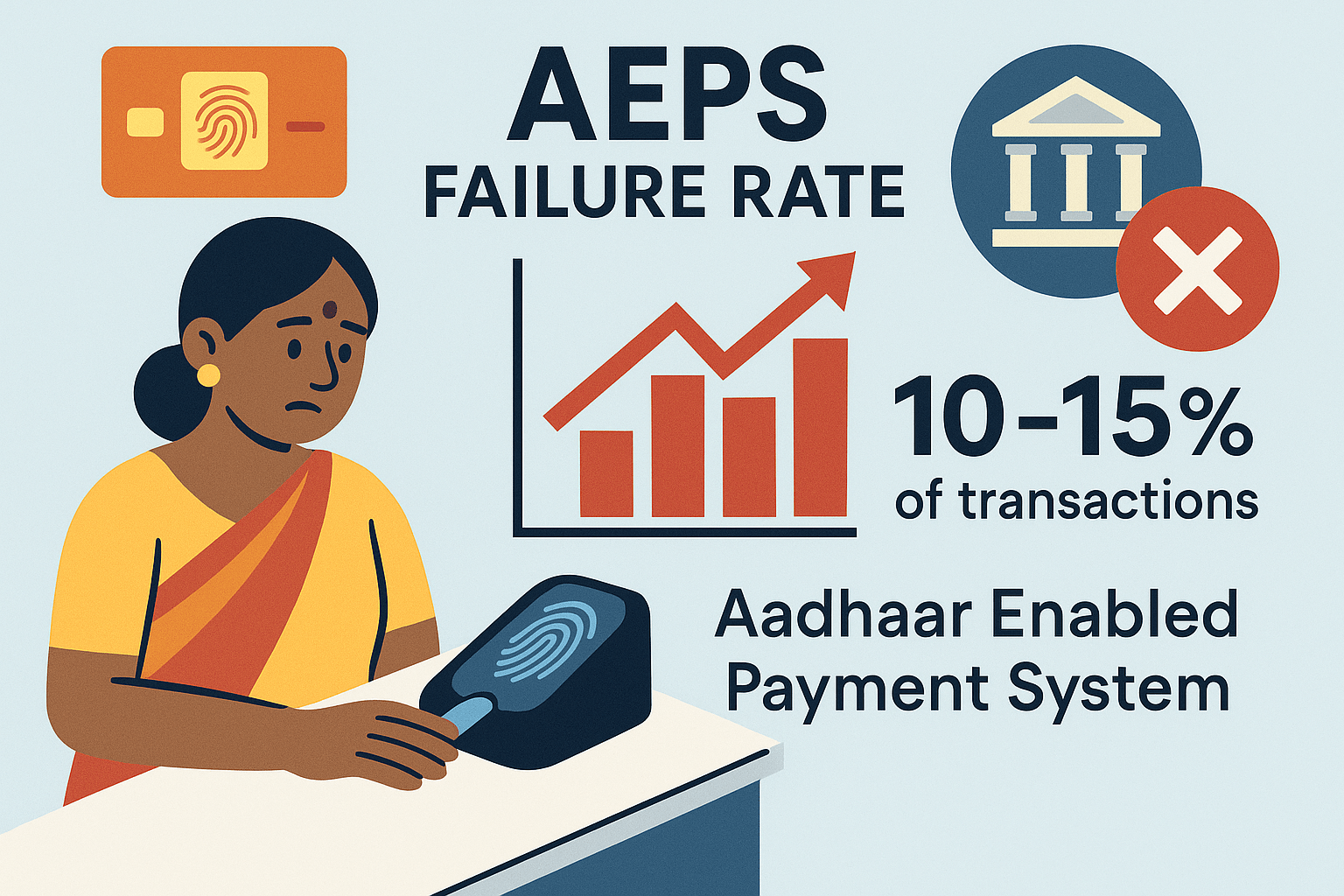The Aadhaar Enabled Payment System (AEPS) has been a game-changer for (AEPS failure rate) financial inclusion in India, allowing millions to access banking services using just their Aadhaar number and biometric authentication. However, in recent times, users and banking experts have noticed a troubling trend—the AEPS failure rate has increased significantly, with 10–15% of transactions failing due to biometric mismatches and bank-level restrictions.
But why is this happening? What’s causing these transaction failures, and how can they be resolved? In this article, we’ll break down the key reasons behind the rising AEPS failure rate, focusing on biometric mismatches and bank-imposed restrictions, while also exploring potential solutions.
1. What is AEPS, and How Does It Work?
Before diving into the reasons for failure, let’s quickly recap how AEPS functions:
-
AEPS is a payment system that enables Aadhaar-linked bank transactions using fingerprint or iris authentication.
-
Users can withdraw cash, deposit money, check balances, and transfer funds without needing a debit card or PIN.
-
The system relies on the Aadhaar database for biometric verification, making it accessible even in rural areas with limited banking infrastructure.
Despite its convenience, AEPS transactions sometimes fail, leading to frustration among users. Let’s explore the primary causes.

2. Why is the AEPS Failure Rate Increasing? Key Reasons
A. Biometric Mismatch (10–15% Failure Rate)
One of the biggest reasons for AEPS transaction failures is biometric authentication errors. Studies suggest that 10–15% of AEPS transactions fail due to fingerprint mismatches. But why does this happen?
i. Poor Fingerprint Quality
-
Manual laborers, farmers, and elderly users often have worn-out or rough fingerprints, making it hard for scanners to read them accurately.
-
Dust, sweat, or minor cuts on fingers can also interfere with authentication.
ii. Outdated Aadhaar Biometric Data
-
If a user’s fingerprints were not captured clearly during Aadhaar enrollment, the system may fail to match them later.
-
Children who enrolled early may need to update their biometrics as they grow older.
iii. Scanner Issues
-
Low-quality or poorly maintained AEPS devices may fail to read fingerprints correctly.
-
Some micro-ATMs or banking correspondents use outdated scanners, increasing failure rates.
B. Bank-Level Restrictions and Technical Glitches
Apart from biometric issues, banks impose certain restrictions that lead to AEPS transaction failures:
i. Daily Transaction Limits
-
Many banks set a daily AEPS withdrawal limit (often ₹10,000 or lower). Exceeding this limit causes failures.
-
Some banks also restrict the number of transactions per day.
ii. Aadhaar-Bank Account Linking Issues
-
If a user’s Aadhaar is not properly linked to their bank account, AEPS transactions will fail.
-
Inactive or dormant accounts may also block transactions.
iii. Server Downtime and Connectivity Problems
-
NPCI (National Payments Corporation of India) and bank servers sometimes face downtime, leading to failed transactions.
-
Poor internet connectivity in rural areas can also disrupt AEPS services.
C. Fraud Prevention Measures
To curb misuse, banks and the UIDAI (Unique Identification Authority of India) have implemented stricter verification rules, leading to more rejections:
-
Multiple failed attempts can temporarily block AEPS access.
-
Suspicious transaction patterns (e.g., frequent large withdrawals) may trigger security holds.
3. How to Reduce AEPS Failure Rates? Possible Solutions
While some factors are beyond users’ control, here are ways to minimize AEPS transaction failures:
✅ Update Aadhaar Biometrics – Visit an Aadhaar center to refresh fingerprints if they’re unreadable.
✅ Ensure Proper Aadhaar-Bank Linking – Verify linkage via net banking or customer care.
✅ Use High-Quality Scanners – Banking correspondents should maintain reliable AEPS devices.
✅ Check Bank-Specific Limits – Be aware of daily transaction caps to avoid rejections.
✅ Try Alternate Authentication – If fingerprints fail, use iris scan (where available).

4. The Future of AEPS: Will Failure Rates Improve?
The government and NPCI are working on improving AEPS reliability by:
-
Upgrading biometric scanners for better accuracy.
-
Increasing server capacity to reduce downtime.
-
Educating users on maintaining fingerprint quality.
However, until these improvements are fully implemented, users may still face occasional AEPS transaction failures.
### Frequently Asked Questions (FAQs)
Q1. Why does my AEPS transaction fail every time?
A: The most common reasons are biometric mismatch, unlinked Aadhaar, or bank-imposed limits. Check your fingerprint quality and account status.
Q2. How can I fix AEPS biometric failure?
A: Re-register your fingerprints at an Aadhaar center and ensure your bank account is properly linked.
Q3. Is there a daily limit for AEPS transactions?
A: Yes, most banks impose a ₹10,000 daily limit for AEPS withdrawals. Check with your bank for exact limits.
Q4. Can I use AEPS without a fingerprint?
A: Some devices support iris scanning, but fingerprint remains the primary method.
Conclusion: Tackling the Rising AEPS Failure Rate
The increase in AEPS failure rates is largely due to biometric mismatches (10–15%) and bank-level restrictions. While the system has revolutionized cashless payments, technical and operational challenges remain.
By updating biometrics, ensuring proper bank linkages, and adhering to transaction limits, users can reduce failures. Meanwhile, NPCI and banks must invest in better infrastructure to enhance AEPS reliability.
For now, staying informed and proactive is the best way to navigate AEPS transaction issues.
Disclaimer
This post is for educational purposes only. If you have any concerns regarding this content, please refer to our DMCA page for removal requests. Always verify the latest banking guidelines from official sources.
